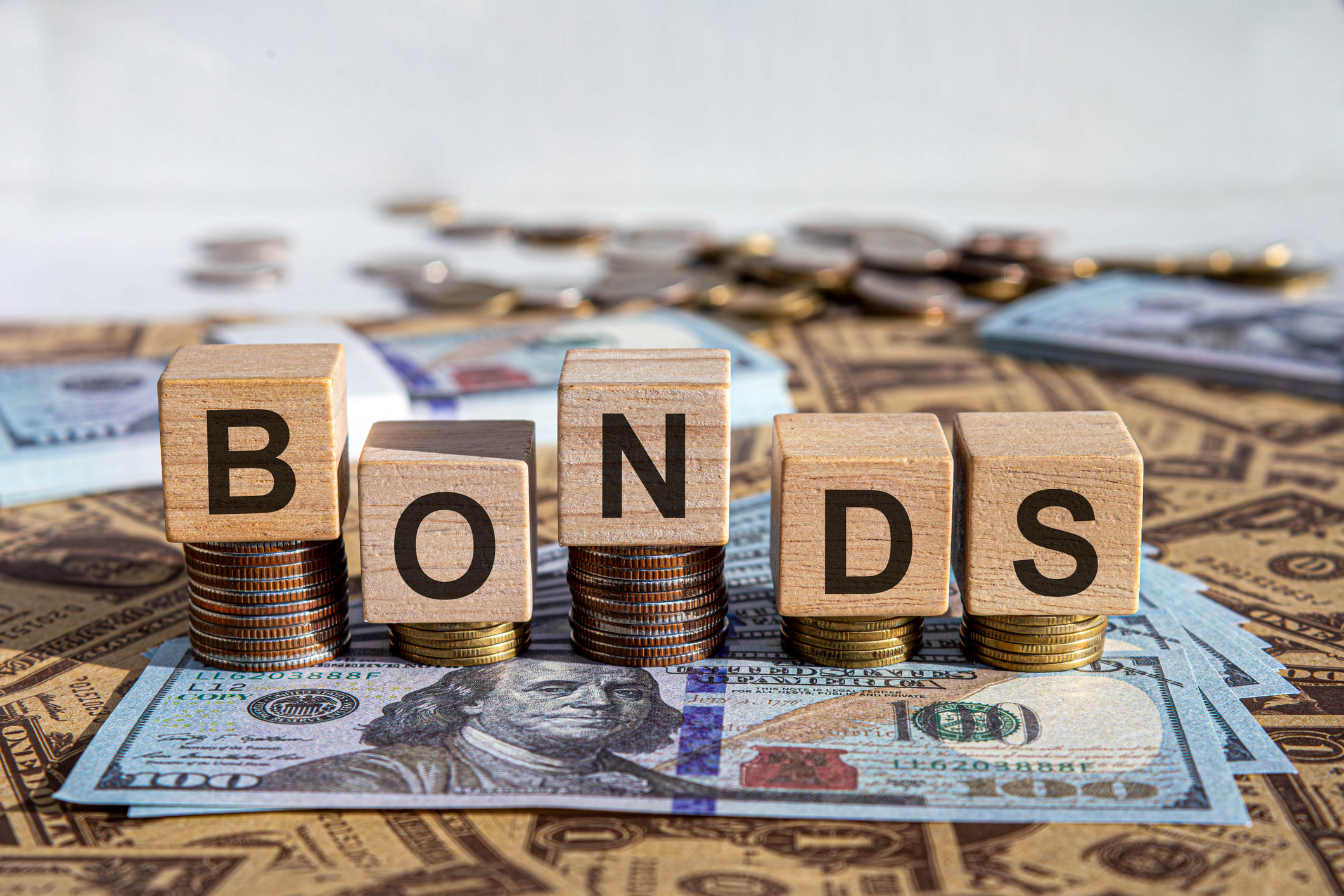Retirees and the Shrinking Nest Egg
Preretirees and retirees have taken the brunt of the downturn. These tools can help make the best of it.
EDITOR'S NOTE: This article was originally published in the November 2008 issue of Kiplinger's Retirement Report. To subscribe, click here.
You made all the right moves. Your portfolio was diversified. Your assets were appropriately allocated for your age. You maxed out on contributions to your retirement plan. Now you're watching your incredible shrinking nest egg with horror.
| Row 0 - Cell 0 | Land on Your Feet After a Downsizing |
| Row 1 - Cell 0 | How to Cope With a Deflated IRA |
| Row 2 - Cell 0 | A Sweet Deal on Roth IRA Conversions |
If you've been tempted to flee the rocky stock market, that's understandable. But financial experts we interviewed were nearly unanimous on one thing: Retirees and soon-to-be retirees need to stay invested. Lighten up, maybe, but don't bail out completely.
From just $107.88 $24.99 for Kiplinger Personal Finance
Become a smarter, better informed investor. Subscribe from just $107.88 $24.99, plus get up to 4 Special Issues

Sign up for Kiplinger’s Free Newsletters
Profit and prosper with the best of expert advice on investing, taxes, retirement, personal finance and more - straight to your e-mail.
Profit and prosper with the best of expert advice - straight to your e-mail.
"The problem with getting out of stocks now is that you won't know when to get back in," says James Swanson, chief investment strategist for MFS Investment Management in Boston. "By the time the market goes up, you could lock in your losses and miss out on the upswing."
And stocks are still considered the best investment for the long haul. The average 70-year-old retiree needs a savings plan that can finance another 20 years or more of retirement. Cash and bonds alone will not beat inflation over time.
If the past is prologue, there's more than a glimmer of hope. The 15 bear markets since 1957 lasted, on average, ten months and knocked the market down an average of 29.4%. In the same period, there were also 15 bull markets, says Swanson, lasting an average of 30 months with average gains of 112.5%.
Of course, we can't predict fluctuations in this particular market, so it's best to stick with things we can control. A bear market is a good time to take a hard look at your portfolio, especially if your projections were based on stocks' historic rates of return of 10% annualized, an unlikely prospect for the next decade. If you are not relying on the advice of an investment consultant, perhaps it's time to find one.
On the plus side, stocks aren't expensive. If you have dogs in your portfolio that you've been meaning to dump, go ahead. But then buy a bargain in the same asset class.
A crisis can be a painful test of your risk tolerance. As a general rule, 30% to 60% of a retiree's portfolio should be invested in stocks. But if a 40% exposure is making you panicky, trim it back some, if the market hasn't already done enough trimming for you. "If you're tossing and turning, you probably should sell something so you can sleep at night," says Sri Reddy, vice-president and head of income strategies for ING U.S. Wealth Management.
That's what Andrew Ames decided to do, at least for a while. Ames, 68, who lives with his wife, Delores, 66, in Burlingame, Cal., retired in 2006 as the head of an executive search firm. Conservative investors, the Ameses kept about 25% of retirement savings in stocks, with the rest in bonds and cash.
As the market started plummeting in early October, Ames called Kevin Dorwin, his financial adviser at Bingham Osborn & Scarborough in San Francisco, who told his client to stay the course. "They did a fair amount of hand-holding," Ames says.
Still, Ames decided to scale back his stock holdings to about 12%, with plans to return to 25% at some point. Why not bail out completely? "If we went to all cash, there would be no opportunity to capitalize on any uptick in the marketplace," he says.
The couple is postponing major renovations to their home, but not a planned trip to Paris. "Given the losses we have incurred, what we will spend in Paris is nothing," he says.
Until the bulls arrive, you're best off drawing on a cash reserve for living expenses, rather than selling stocks while they're declining or cashing out long-term bonds. Rande Spiegelman, vice-president of financial planning for Charles Schwab & Co., suggests having five years' worth of spending money in safe instruments. The first year should be in federally insured cash deposits and in money-market mutual funds, he says. The rest should be in short-term bonds and longer-term certificates of deposit.
If you're still working, sock away part of your paycheck into a liquid account. Retirees can replenish their cash cache by sweeping mutual fund distributions into a money-market fund instead of having them automatically reinvested.
A home-equity line of credit can serve as an emergency cash source. With falling home values, it's harder to get a home-equity line of credit, and many banks are suspending or reducing such credit. But if you have plenty of equity in your house, you can make a case to your lender or to a community bank that knows local housing-market conditions.
If you have a line of credit and a big expense coming up, consider taking the money out and putting it in a safe investment, says John Ulzheimer, president of consumer education for Credit.com, which offers consumer-credit information. He notes, however, that the debt will show up on your credit report.
Safe places for cash. Banks are safer than ever, now that Congress has hiked the limit for federal deposit insurance to $250,000 per account, from $100,000, at least through the end of 2009.
Look for good deals on certificates of deposit, especially at smaller community banks, credit unions and online banks. You can compare rates at Bankrate.com.
For the first time, the government is also insuring some money-market mutual funds. A temporary program promises investors that if a fund "breaks the buck" -- that is, if its net asset value falls below $1 per share -- the government will make up the difference. This promise applies only to the number of shares owned on September 19. Just about every fund has joined the program, which ends in April unless the Treasury secretary extends coverage.
[page break]
For new money going into money funds, beware of funds with the highest yields. They often hold riskier assets. Peter Crane, founder of Crane Data, a mutual fund information company, advises investors to keep an eye on the Federal Reserve's federal funds rate. To play it safe, pick a money fund that offers a yield within a point or two of that target rate.
Also factor the size of the sponsoring company. "Go with a fund that's part of a larger complex -- they have deeper pockets," says Connie Bugbee, managing editor of iMoneyNet. A large company has resources to cover shortfalls, she says.
Once you've reviewed your portfolio, consider other tools for your crisis survival kit:
Strengthen your credit score. A good credit score is more important than ever. Credit-card issuers are reducing credit limits, so read your statements closely, says Greg McBride, senior financial analyst at Bankrate.com. A reduction on a limit on one card can affect your overall "utilization ratio."
So, if you've used $20,000 out of a $100,000 total credit limit on four cards, you have a ratio of 20%. If two cards cut your limit by $30,000, your ratio is 28%. A rising ratio can torpedo your credit score.
To improve the ratio, either pay down the debt or ask the card issuers to restore your credit. Also, visit AnnualCreditReport.com for copies of your credit reports, and get any mistakes corrected. And avoid canceling credit cards; by reducing your available credit, your ratio could spike.
Withdraw less, spend less, work longer. One rule of thumb for retirees is to withdraw 4% of their retirement nest egg in the first year of retirement, with a 3% increase each following year to account for inflation. So if you have a $1 million portfolio, you would withdraw $40,000 the first year, $41,200 the next year and so forth. With that schedule, a 65-year-old's money is likely to last for 30 years.
But for someone retiring at the beginning of a bear market, the 4% rule can be too extravagant. It's difficult for new retirees to recoup losses if they're withdrawing as the market declines.
You can mitigate those losses by reducing your planned withdrawals. If you're a new retiree, try to forgo the inflation adjustments during the first few years of a bear market. Such an approach, according to a recent study by T. Rowe Price, would give a portfolio an excellent shot of lasting for the rest of the individual's lifetime.
On the spending side, nothing is too small. To save on energy costs, Vernon Harmon, age 72, has installed thermal-lined drapery, uses compact fluorescent light bulbs, and runs the washer and dryer only when he has a full load. Harmon, who lives in Williamsport, Md., also uses a water purifier to save on the costs of bottled water.
Some other cuts may be more painful, such as reconsidering big gifts to your adult children and your grandchildren. "Children have a lifetime ahead of them to earn money and save money," Dorwin says. "You only have one retirement."
If you were planning to retire soon, hold off if you can. "Working another year is another year of income and one less year to pay in retirement," says David Wyss, chief economist for Standard and Poor's. If you are already retired, you could make some extra money by taking a part-time job, perhaps at a bookstore if you like to read or at a hardware store if you are handy.
Save on taxes. Although you shouldn't flee stocks, unloading some losers can reduce your tax bill. You first use capital losses to offset gains. Then use excess losses to offset $3,000 in ordinary income.
You could also save on taxes by undoing a Roth IRA conversion. Dorwin offers this example: Say you're in the 25% tax bracket and had $100,000 in your traditional IRA that you converted to a Roth. Now the account is down to $50,000 because of market losses. In April, you will owe $25,000 in income taxes on the full $100,000 unless you "recharacterize" -- that is, reverse -- the conversion before you file your return.
For more authoritative guidance on retirement investing, slashing taxes and getting the best health care, click here for a FREE sample issue of Kiplinger's Retirement Report.
Profit and prosper with the best of Kiplinger's advice on investing, taxes, retirement, personal finance and much more. Delivered daily. Enter your email in the box and click Sign Me Up.

-
 Changes Are Coming for This Invesco Bond Fund
Changes Are Coming for This Invesco Bond FundThe Invesco BulletShares 2026 Corporate Bond ETF's bonds will mature in 2026. Here's what investors should do.
-
 What Science Reveals About Money and a Happy Retirement
What Science Reveals About Money and a Happy RetirementWhether you’re still planning or already retired, these research-based insights point the way to your best post-work life.
-
 7 Retirement Planning Trends: What They Mean for You in 2026
7 Retirement Planning Trends: What They Mean for You in 2026From government shutdowns to market swings, the past 12 months have been nothing if not eventful. The key trends can help you improve your own financial plan.
-
 What Does Medicare Not Cover? Eight Things You Should Know
What Does Medicare Not Cover? Eight Things You Should KnowMedicare Part A and Part B leave gaps in your healthcare coverage. But Medicare Advantage has problems, too.
-
 15 Reasons You'll Regret an RV in Retirement
15 Reasons You'll Regret an RV in RetirementMaking Your Money Last Here's why you might regret an RV in retirement. RV-savvy retirees talk about the downsides of spending retirement in a motorhome, travel trailer, fifth wheel, or other recreational vehicle.
-
 457 Plan Contribution Limits for 2026
457 Plan Contribution Limits for 2026Retirement plans There are higher 457 plan contribution limits in 2026. That's good news for state and local government employees.
-
 Estate Planning Checklist: 13 Smart Moves
Estate Planning Checklist: 13 Smart Movesretirement Follow this estate planning checklist for you (and your heirs) to hold on to more of your hard-earned money.
-
 Medicare Basics: 12 Things You Need to Know
Medicare Basics: 12 Things You Need to KnowMedicare There's Medicare Part A, Part B, Part D, Medigap plans, Medicare Advantage plans and so on. We sort out the confusion about signing up for Medicare — and much more.
-
 The Seven Worst Assets to Leave Your Kids or Grandkids
The Seven Worst Assets to Leave Your Kids or Grandkidsinheritance Leaving these assets to your loved ones may be more trouble than it’s worth. Here's how to avoid adding to their grief after you're gone.
-
 SEP IRA Contribution Limits for 2026
SEP IRA Contribution Limits for 2026SEP IRA A good option for small business owners, SEP IRAs allow individual annual contributions of as much as $70,000 in 2025, and up to $72,000 in 2026.
-
 Roth IRA Contribution Limits for 2026
Roth IRA Contribution Limits for 2026Roth IRAs Roth IRAs allow you to save for retirement with after-tax dollars while you're working, and then withdraw those contributions and earnings tax-free when you retire. Here's a look at 2026 limits and income-based phaseouts.

